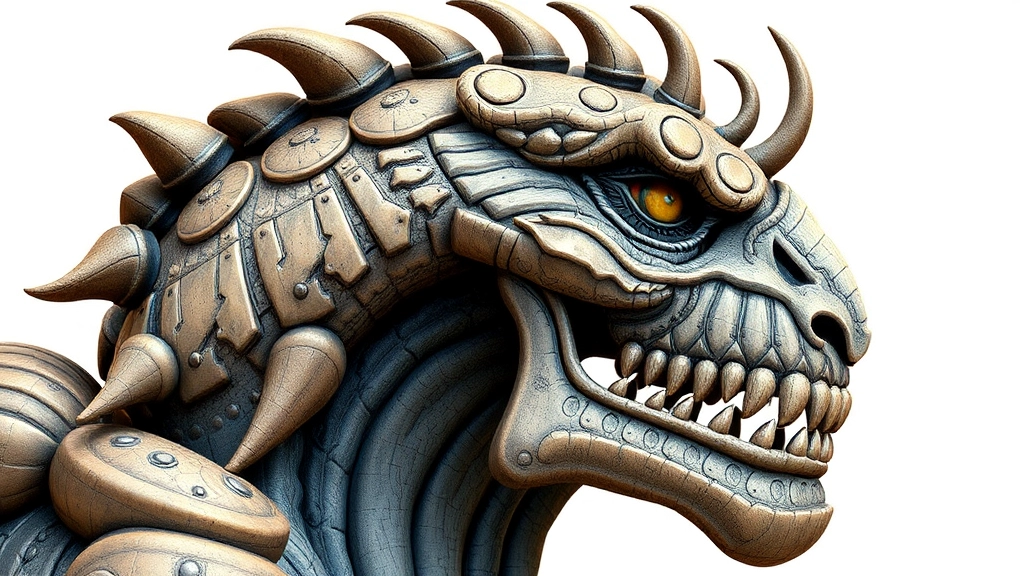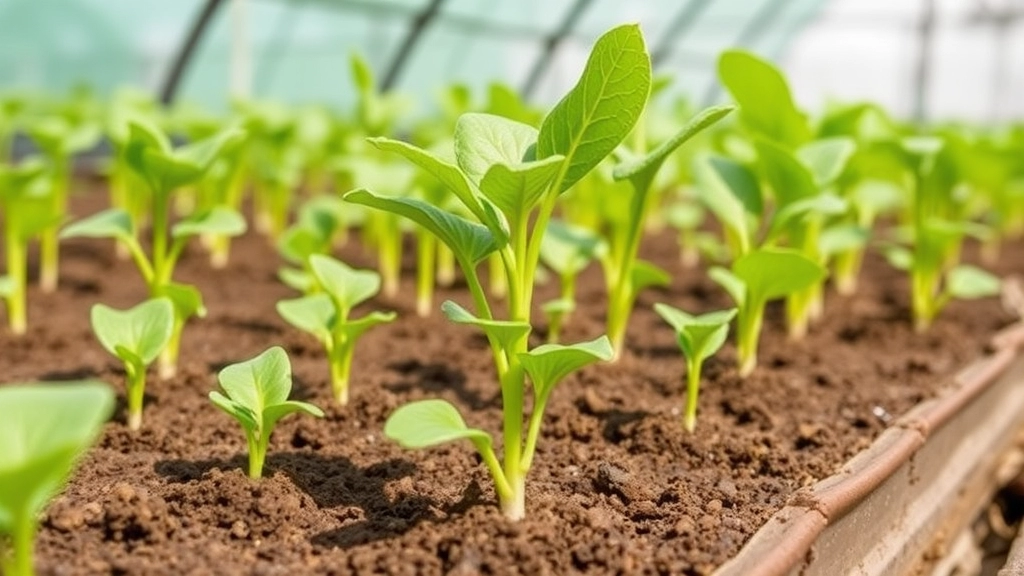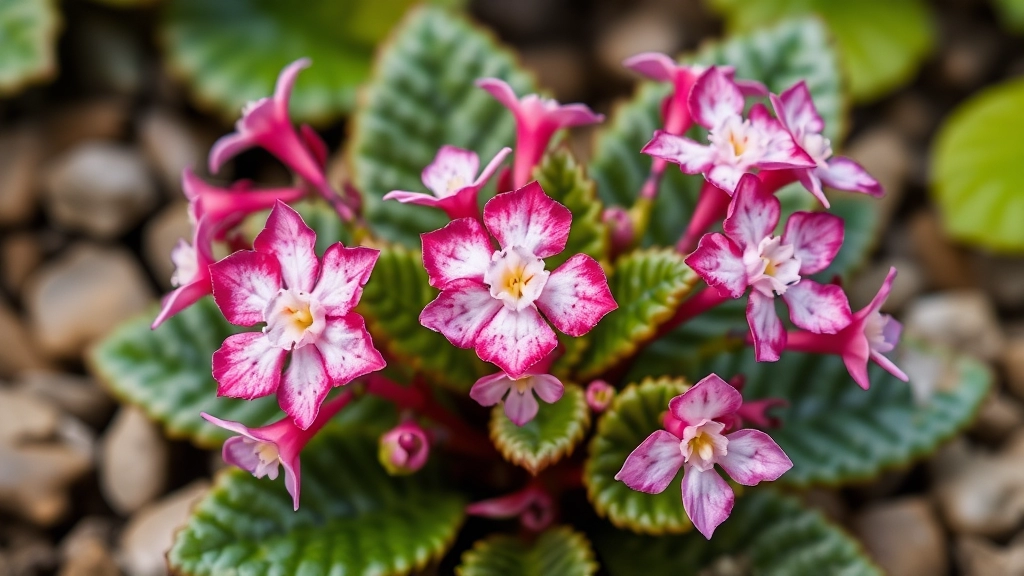Kalanchoe Beharensis Snowflake
As a plant enthusiast, I’m thrilled to introduce you to the fascinating world of Kalanchoe beharensis snowflake. This unique succulent, with its velvety leaves and snowflake-like appearance, is a true marvel of nature. In this article, we’ll explore its striking features, care requirements, and why it’s become a favorite among plant lovers.
From its drought-tolerant nature to its impressive size, the Kalanchoe beharensis snowflake is more than just a pretty face. We’ll dive into propagation techniques, common pests to watch out for, and the benefits of growing this exotic beauty. Whether you’re a seasoned plant parent or a curious beginner, you’re in for a treat with this extraordinary succulent.
Overview of Kalanchoe Beharensis Snowflake
Ever stumbled upon a plant that looks like it’s from another planet?
That’s Kalanchoe Beharensis Snowflake for you.
This succulent’s a real head-turner, and I’m not just saying that.
Let’s break it down:
- It’s part of the Crassulaceae family (fancy, right?)
- Native to Madagascar (exotic vibes, anyone?)
- Goes by “Felt Bush” or “Elephant’s Ear Kalanchoe” (cute nicknames, if you ask me)
Here’s the deal:
This plant’s got these massive, velvety leaves that feel like felt.
They’re silvery-green and can grow up to 20 inches long. No joke.
The edges? They’re all wavy and ruffled, giving it this snowflake-like appearance.
Hence the name. Pretty clever, huh?
But here’s the kicker:
It’s not just a pretty face. This plant’s tough as nails.
Drought-resistant, low-maintenance, and can handle a bit of neglect.
Perfect for those of us who aren’t exactly plant whisperers.
So, whether you’re a seasoned plant parent or a newbie, Kalanchoe Beharensis Snowflake’s got your back.
It’s like the cool, laid-back friend of the plant world.
Ready to dive deeper? Let’s explore what makes this succulent so darn special.
Unique Features and Characteristics

Alright, let’s dive into what makes the Kalanchoe Beharensis Snowflake such a standout in the succulent world. Trust me, this plant’s got some serious wow factor!
Striking Appearance
First off, the Snowflake’s leaves are a sight to behold. They’re massive, velvety, and covered in these tiny white hairs that give them a frosted look. It’s like Mother Nature decided to sprinkle some magic dust on this beauty.
Unusual Leaf Shape
The leaves aren’t just big; they’re uniquely shaped too. They’ve got these wavy edges that kinda remind me of a fancy lettuce leaf. But don’t go trying to toss this in your salad!
Colour Variations
Now, here’s where it gets really interesting. The leaves can range from silvery-green to bronze, depending on how much sun they’re soaking up. It’s like the plant’s got its own built-in mood ring!
Impressive Size
This isn’t your average desktop succulent. The Snowflake can grow up to 6 feet tall! It’s basically the Godzilla of the succulent world.
Drought Tolerance
Like most succulents, this tough cookie can handle dry spells like a champ. It’s perfect for those of us who sometimes forget to water our plants (guilty as charged!).
Unique Texture
The leaves feel like velvet to the touch. It’s seriously addictive – I catch myself stroking the leaves every time I walk past mine.
Slow Growth Rate
Don’t expect this plant to shoot up overnight. It’s a slow grower, which means you’ve got plenty of time to enjoy each stage of its development.
To sum it up, the Kalanchoe Beharensis Snowflake is a real head-turner with its frosted leaves, unusual shape, and impressive size. It’s like having a living sculpture in your home or garden. If you’re interested in other unique Kalanchoe varieties, check out the Kalanchoe Beharensis Oak Leaf or the hairy Kalanchoe Tomentosa. Trust me, once you’ve got one of these beauties, you’ll be hooked!
Ideal Growing Conditions
Ever wondered how to make your Snowflake thrive? Here’s the lowdown:
Light:
- These succulents love bright, indirect sunlight
- A spot near a window with filtered light is perfect
- Too much direct sun can scorch the leaves, so watch out!
Temperature:
- They’re not fans of the cold, keep ’em above 10°C (50°F)
- Ideal range: 15-24°C (60-75°F)
- Can handle short bursts of heat, but prefer it cooler
Soil:
- Well-draining soil is a must
- Mix regular potting soil with sand or perlite
- Think desert-like conditions – they hate wet feet!
Humidity:
- These tough cookies don’t need much humidity
- Average room humidity is fine
- If it’s too humid, improve air circulation
Pot size:
- Don’t go too big – they like to be a bit snug
- Choose a pot with drainage holes
- Repot every 2-3 years as they grow
Remember, Kalanchoe Beharensis Snowflake is pretty forgiving. Get these basics right, and you’ll have a happy plant on your hands.
Propagation Techniques

Alright, let’s dive into how to make more of these funky Kalanchoe Beharensis Snowflake plants. Trust me, it’s not rocket science, but there are a few tricks up my sleeve that’ll make your life a whole lot easier.
Leaf Cuttings: The Easy-Peasy Method
Here’s the deal: leaf cuttings are your best bet. It’s like the plant’s version of copy-paste. Here’s how you do it:
- Snip off a healthy leaf – go for the mature ones
- Let it dry out for a day or two (this helps prevent rotting)
- Stick it in some well-draining soil
- Keep it warm and slightly moist
- Wait for the magic to happen (usually takes a few weeks)
Stem Cuttings: For When You’re Feeling Adventurous
If you’re up for a bit more of a challenge, stem cuttings are your next move. It’s like giving your plant a haircut and planting the trimmings. Here’s the lowdown:
- Cut a 4-6 inch piece from a healthy stem
- Remove the lower leaves
- Let it callous over for a day
- Plant it in a mix of perlite and cactus soil
- Water sparingly until roots form
Seeds: The Long Game
Look, I’ll be straight with you – growing from seeds is a bit of a pain. It takes forever and the success rate isn’t great. But if you’re dead set on it:
- Sow seeds in spring
- Use a well-draining soil mix
- Keep them warm (around 70°F)
- Be patient… like, really patient
Pro Tips:
- Always use clean, sharp tools to avoid spreading diseases
- Spring and summer are your best bet for propagation
- Don’t overwater – these guys hate wet feet
Remember, propagating Kalanchoe Beharensis Snowflake isn’t an exact science. Sometimes it works like a charm, other times it’s a flop. But that’s half the fun, right? Keep at it, and before you know it, you’ll have more Kalanchoe Beharensis snowflakes than you know what to do with.
Common Pests and Diseases
Let’s chat about the baddies that might mess with your Kalanchoe Beharensis Snowflake.
Pests and diseases can be a real pain, but don’t worry – I’ve got your back.
First up, the usual suspects:
- Mealybugs
- Spider mites
- Aphids
These little buggers love sucking the life out of your plant.
But here’s the thing – they’re not invincible.
A quick spray with neem oil or insecticidal soap usually does the trick.
Now, let’s talk rot.
Root rot and stem rot are the big ones to watch out for.
They’re sneaky and can take hold before you even notice.
The culprit? Overwatering, plain and simple.
Remember, these guys are succulents – they like it dry.
Fungal infections can also be a pain.
You might see spots on the leaves or a powdery coating.
Don’t panic – a fungicide can usually sort it out.
Here’s a pro tip: prevention is key.
Keep your plant in well-draining soil, don’t overwater, and give it plenty of air circulation.
Do that, and you’ll be ahead of the game.
Got questions about pests or diseases on your Kalanchoe Beharensis Snowflake?
Hit me up – I’m always happy to chat plants.
Watering and Fertilizing Guidelines
Alright, let’s dive into the nitty-gritty of keeping your Kalanchoe Beharensis Snowflake happy and thriving. Trust me, I’ve been there – staring at my plant, wondering if I’m giving it too much love or not enough. But don’t sweat it; I’ve got your back.
Watering: The Goldilocks Zone
Here’s the deal with watering:
- Less is more: These succulents are drought-tolerant champs
- Wait for the soil to dry out completely between waterings
- In summer, you might water once a week
- Winter? Dial it back to once every 2-3 weeks
Pro tip: Stick your finger in the soil. If it’s dry up to your knuckle, it’s watering time.
Overwatering is the kiss of death for these guys. Remember, they’re succulents – they’re built to store water like a camel. If you’re unsure, it’s always better to underwater than overwater.
Fertilizing: Feed Me, Seymour (But Not Too Much)
Now, let’s talk plant food:
- Use a balanced, water-soluble fertilizer
- Dilute it to half strength – these aren’t hungry hippos
- Feed during the growing season (spring and summer)
- Once a month is plenty
Here’s a secret: I’ve had great success with a 10-10-10 NPK ratio. But hey, your mileage may vary.
The Seasonal Shift
Summer: More water, regular feeding
Winter: Less water, no feeding
It’s like how we eat more ice cream in summer and more soup in winter. Plants have seasons too!
Common Mistakes to Avoid
- Overwatering: The number one killer. If leaves are yellowing or falling off, you might be drowning your plant.
- Over-fertilizing: More isn’t better. Too much fertilizer can burn the roots.
- Ignoring drainage: Make sure your pot has holes. No one likes wet feet, especially not Kalanchoe.
Remember, Kalanchoe Beharensis Snowflake is a tough cookie. It’s not high maintenance, but it does appreciate a bit of attention. Get these watering and fertilizing guidelines right, and you’ll have a happy, healthy plant that’ll make your friends green with envy. If you’re interested in other varieties, check out the Kalanchoe tomentosa varieties for some fuzzy alternatives.
Pruning and Maintenance Tips
Alright, let’s chat about keeping your Kalanchoe Beharensis Snowflake looking fab.
First things first, pruning is your best mate here.
Why? It keeps your plant in shape and encourages new growth.
Here’s the lowdown on pruning:
- Snip off any dead or yellowing leaves
- Trim back leggy stems to promote bushiness
- Always use clean, sharp scissors to avoid infections
Now, maintenance isn’t just about pruning.
You’ve gotta keep an eye on the basics too:
- Dust the leaves regularly – it helps with photosynthesis
- Rotate the pot every few weeks for even growth
- Check for pests or diseases during your routine care
Pro tip: Less is more with this plant.
Don’t go overboard with pruning or fussing.
Kalanchoe Beharensis Snowflake is pretty chill and low-maintenance.
Just give it a once-over every couple of weeks, and you’re golden.
Remember, the key to a happy Snowflake is consistent, gentle care.
Keep these tips in mind, and your plant will be thriving in no time.
Benefits of Growing Kalanchoe Beharensis Snowflake
Let’s chat about why you might want to add a Kalanchoe Beharensis Snowflake to your plant collection. Trust me, this isn’t just another pretty face in the succulent world.
Eye-Catching Decor
First off, this plant is a real showstopper. Its large, velvety leaves with their unique snowflake-like appearance can instantly jazz up any room. It’s like having a living sculpture that doesn’t need dusting!
Low Maintenance Marvel
If you’re like me and sometimes forget to water your plants, you’re in luck. These succulents are tough cookies. They can handle a bit of neglect, making them perfect for busy folks or newbie plant parents.
Air Purification Powerhouse
Here’s a cool fact: Kalanchoe Beharensis Snowflake isn’t just pretty; it’s also working hard to clean your air. It’s like having a natural air purifier that doesn’t need plugging in or filter changes.
Stress Buster
Ever noticed how tending to plants can be oddly relaxing? There’s something zen about caring for a Kalanchoe Beharensis. It’s a great way to unwind after a long day and connect with nature, even if you’re stuck in a tiny flat.
Conversation Starter
Trust me, when you have one of these in your home, people will ask about it. It’s a great ice-breaker and can spark interesting conversations about plants, nature, and sustainability.
Versatile Grower
Whether you’ve got a sunny windowsill or a shady corner, this plant can adapt. It’s like the chameleon of the plant world, making it perfect for various living spaces.
Propagation Fun
Once you’ve got the hang of it, you can easily propagate these plants. It’s like getting free plants! Plus, they make great gifts for friends and family.
To sum it up, growing a Kalanchoe Beharensis Snowflake isn’t just about having a pretty plant. It’s about bringing a bit of nature indoors, improving your air quality, and maybe even picking up a new hobby. So why not give it a go? Your space (and your lungs) might thank you for it! If you’re interested in other varieties, you might want to check out the Kalanchoe Tomentosa varieties as well.
Frequently Asked Questions (FAQs)
Here’s the lowdown on the most common questions I get about this unique succulent:
1. How often should I water my Kalanchoe Beharensis Snowflake?
Look, overwatering is the number one killer of these plants. I learned this the hard way when I first started. Here’s my rule of thumb:
- Let the soil dry out completely between waterings
- In summer, water every 2-3 weeks
- In winter, cut back to once a month
Remember, it’s better to underwater than overwater. These guys are tough cookies and can bounce back from drought way easier than root rot.
2. Can I grow Kalanchoe Beharensis Snowflake indoors?
Absolutely! I’ve got a few thriving in my living room right now. Just make sure you:
- Place them near a bright window
- Avoid direct sunlight (it can scorch the leaves)
- Keep them away from drafts and heating vents
3. Why are the leaves on my Kalanchoe Beharensis Snowflake turning yellow?
Been there, done that. Usually, it’s one of these culprits:
- Overwatering (most common)
- Not enough light
- Nutrient deficiency
My advice? Check your watering habits first. If that’s not it, try moving your plant to a brighter spot or giving it a bit of balanced fertiliser.
4. How big will my Kalanchoe Beharensis Snowflake grow?
These aren’t your average houseplants, folks. Given the right conditions, they can become proper beasts:
- Indoor plants typically reach 3-4 feet tall
- Outdoor plants in warm climates can hit 6-8 feet or more
Just make sure you’ve got the space before you let them loose!
5. Is Kalanchoe Beharensis Snowflake toxic to pets?
Unfortunately, yes. All parts of the plant are toxic if ingested. If you’ve got curious pets or kids, it’s best to keep these plants out of reach or opt for a pet-safe alternative.
6. How do I propagate my Kalanchoe Beharensis Snowflake?
It’s easier than you might think. Here’s my quick and dirty method:
- Cut a healthy leaf or stem
- Let it callous over for a few days
- Stick it in well-draining soil
- Water sparingly until roots form
Boom! New plant.
7. Why isn’t my Kalanchoe Beharensis Snowflake flowering?
Don’t sweat it. These plants rarely flower indoors. They’re all about those funky leaves anyway. If you’re dead set on flowers, try:
- Increasing light exposure
- Letting it experience a cool period in winter
- Being patient (it can take years for mature plants to bloom)
Remember, Kalanchoe Beharensis Snowflake is a unique and fascinating plant that can add a touch of the exotic to any space. With the right care, it’ll thrive and become a real conversation starter. Got more questions? Fire away – I’m always happy to chat plants!
Frequently Asked Questions (FAQs)
1. How much light does Kalanchoe Beharensis Snowflake need?
These plants thrive in bright, indirect light. Place them near a window with filtered sunlight. Too much direct sun can scorch the leaves, while too little light can lead to leggy growth.
2. Is Kalanchoe Beharensis Snowflake frost-hardy?
No, it’s not frost-hardy. These succulents are native to Madagascar and prefer warm temperatures. Keep them above 10°C (50°F) and protect them from cold drafts.
3. How often should I repot my Kalanchoe Beharensis Snowflake?
Repot every 2-3 years or when the plant outgrows its current container. Use a pot that’s only slightly larger than the previous one, as these plants prefer to be somewhat root-bound.
4. Can I grow Kalanchoe Beharensis Snowflake outdoors?
Yes, but only in warm climates (USDA zones 9-11). In cooler areas, you can move them outdoors during summer but bring them in before temperatures drop below 50°F (10°C).
5. Why are the edges of my plant’s leaves turning brown?
Brown leaf edges often indicate underwatering or low humidity. Increase watering slightly and consider misting the leaves occasionally to boost humidity.
6. How fast does Kalanchoe Beharensis Snowflake grow?
These plants are slow growers. Under optimal conditions, they might grow a few inches per year. Don’t expect rapid changes – patience is key with this species.
7. Can I use regular potting soil for my Kalanchoe Beharensis Snowflake?
It’s best to use a well-draining cactus or succulent mix. If using regular potting soil, mix it with sand or perlite to improve drainage and prevent water retention.
8. How do I know if I’m overwatering my plant?
Signs of overwatering include yellowing leaves, soft or mushy stems, and a general droopy appearance. If you notice these symptoms, reduce watering immediately and check for root rot.
References
-
Missouri Botanical Garden – Kalanchoe beharensis Plant Finder Details

